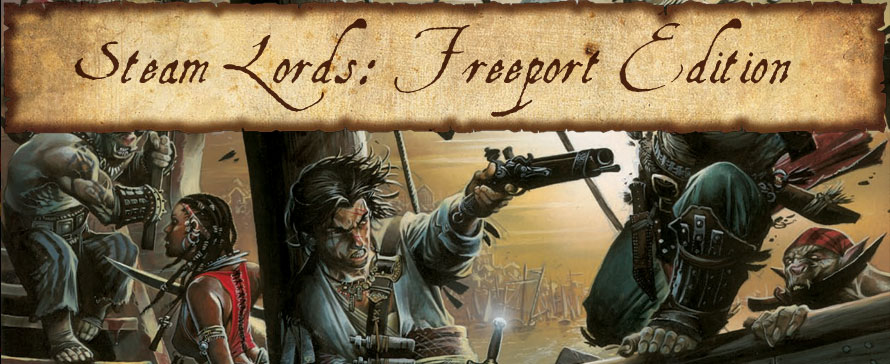
When Saruman and the Witch-King began their assault on Middle-Earth, the Dwarves of Moria, under the leadership of Durin VI, responded with an action which arguably preserved the culture and people of Lórien, simultaneously redressing a grievous wrong which had plagued the relations between the Elves of Lórien and the Dwarves of Khazad-dûm for over a thousand years.
The Dwarves of Khazad-dûm and the Elves of Eregion had enjoyed an amicable relationship of trade, commerce and craftsmanship:
"The discovery of mithril [circa. S.A. 700] prompted a Noldor migration into Eregion. Coming in search of new material for their wondrous crafts, these Elves settled in smaller Elven towns and built a great city at the junction of the Rivers Sirannon and Glanduin. Mithril excite the ever-curious Noldor, Elves who rivaled--and often surpassed--the Dwarves in the art of smithcraft...Within decades of finding mithril, Durin's folk had completed a subterranean road beneath the Silvertine that connected their city and mines to the Elven realm of Eregion. The West-gate of Khazad-dûm was opened, and goods bound for the Noldor stores and forges no longer had to travel the long route over the Redhorn Pass. Khazad-dûm [now] spanned the Misty Mountains. Elf-crafts and Dwarven things flowed freely and the Dwarf-city become known for its increasingly opulent splendor. It was truly a golden time" (Moria 13).
However, this peace and goodwill was not to endure. In S.A. 1697, the Dwarves of Khazad-dûm closed the West Gate "in defense against the onslaught" of Sauron's armies, and, "in doing so, shut out Eregion's Elven refugees" (18-19). When the Dark Lord's armies invaded Eregion, the "Dwarven warriors refused to leave the protective confines of their city, while the Deep-elves battled the Dark On'es host through the ravines and holly-covered hills of Eregion. By day, the Noldor withstood waves of pitiless Men; at night, the assailing ranks were filled with countless Orcs and Trolls. Sauron's horde broke through and stormed the Elf-city of Ost-in-Edhil. Seeking refuge for his beleaguered people, Celebrimbor sent envoys to Durin III. The Dwarf-king refused to open the West-gate to the Elves, just as he had denied warriors for the defense of Eregion. The escape route was closed, and the Noldor slaughtered" (14). This action was the genesis of "Moria," the Elven name for Khazad-dûm, which means "the Black Chasm" (19).
Legends take Durin III's Ring of Power into account for his rejection of Celebrimbor's pleas, since, while the Rings of Power given to the Dwarf Lords never resulted in Sauron's mastery over them, they have been held responsible for the increase in greed and paranoia amongst the Dwarves. The Dwarven version of the story is that Durin III's "acted out of concern for his people" (14), assessing the defense of Eregion a lost cause and any aid to the Elves too great a risk to his own people. "In any case, Durin III withheld aid when it was sorely needed, and the Elves never forgave him or his kindred" (14).
Nearly 4000 years later, history repeated itself. In 1972, Lórien, threatened by the alliance between Saruman and the Witch-King (popularly known as the "Second Darkness") turned to the Dwarves of Moria for assistance. Amroth and Nimrodel, rulers of Lorien following the Last Alliance, simply begged passage through Moria to Eregion, and then on to the Grey Havens to escape the fall of Middle-Earth. Durin VI agreed, but when the Elven host reached the West Gate and found Eregion had fallen to the Dark Alliance's Host, the Dwarven King saw the opportunity to strengthen his own people's chances to withstand the coming tide of darkness by forging new ties with the Elves of Lórien. The compact made between Durin VI and Amroth proved to be a powerful one, and the Elves and Dwarves of Khazad-dûm may well have held the underground citadel indefinitely, had it not been for the unearthing of one of the Darkness' greatest minions in the depths of the Seventh Deep of Khazad-dûm. The unearthing of the Balrog of Moria in 1980 was too great a power for even the combined might of the Elves and Dwarves with the host of the Second Darkness on both their doorsteps. The battle between the Balrog and the denizens of Khazad-dûm resulted in the opening of the Eastern gate, and as Dwarves and Elves attempted to flee, they were cut down by the waiting hordes of Orcs, Trolls, Black Numenoreans, and the subjugated peoples of Middle-Earth. The Dark Alliance had found entry to Moria through the East Gate, and with the Balrog on one side and an army on the other, Durin VI and Amroth had no choice but to surrender.
Nimrodel, overcome with fear of the Balrog, cast herself from the Bridge of Khazad-dûm, sending Amroth into a killing fury. The wrath of the Elf Lord in his sorrow was great, and while he succeeded in sorely wounding the Balrog, the forces of Darkness prevailed. The Elves and Dwarves of Khazad-dûm found themselves under the heel of Saruman and the Witch-King. Since that fateful day in early 1981, Khazad-dûm has become Moria the Dark Chasm once again.
Now, in 2008, Elven and Dwarven craftspeople create weapons which oppress the Free Peoples. Slaves from all corners of Middle-Earth labor in the Mines of Moria, seeking Mithril, Laen, and other precious metals, not to mention coal to feed the engines of steam which belch black clouds into once-blue skies. It has become a saying amongst the peoples of Moria that they are glad they are captive beneath the earth, since they have never had to see the sorrow of Middle-Earth under the gloom of the Second Darkness. However, there are whispers of hope, whispers that remind that the darkness is only a veil hiding skies which remain blue. It only remains for those whose hope can give birth to courage to clear the skies of the darkness, to let the light shine once again.
